Psychological Effects of Car Interior Lighting Colours: A Comprehensive Analysis
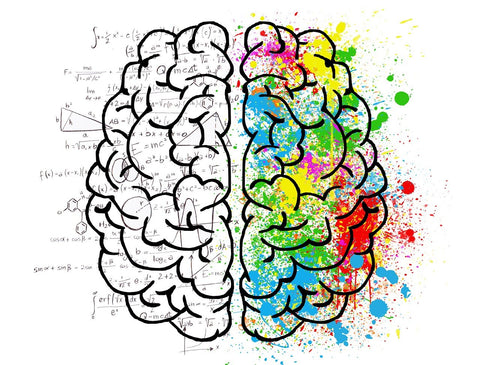
Car interior lighting has come a long way from its humble beginnings as simply a functional source of illumination. Today, it plays a crucial role in creating the right mood, enhancing our driving experience, and even influencing our emotions.
The use of different lighting colours and dynamic patterns has been found to have a significant impact on driver satisfaction, tension levels, and overall comfort.
In this comprehensive analysis, we will delve into the psychological effects of car interior lighting colours and explore how they contribute to the overall driving experience.
Why is our Driving Environment Important Anyway?
Our driving experience goes far beyond getting from A to B, engaging both our physical senses and perceptions.
Physically speaking, fatigue, injury, temperature and anything else that can affect your movement, vision or hearing, can therefore impact the quality of your driving. As steering, accelerating and braking are all done by physical actions. While our perceptions which help to us to judge scenarios in order to discern the action to take, can be affected by alcohol, tiredness, medication and much more.
Our physical senses and perception also work in synergy. For example, in hazard perception, you first must see ahead when driving, you then have to consider each potential hazard and your perception will then determine how you react.
It takes driving experience for your driving performance to become a more unconscious and harmonious effort, which usually comes only after a few years of driving and exposure to many types of driving scenarios.
To add to this, we have to also navigate external factors, such as the type of car we are using, the roads we are driving on, other motorists, cyclists and pedestrians.
These are some of the factors that play a role in the quality of your driving.
According to the National Travel Survey, Brits spend a total of 597 hours driving per year. That is the equivalent of 25 days!
Considering we spend that amount of time behind the wheel and have all these factors that can impact our driving, helps to validate the reasons we should consider optimising our driving environment.
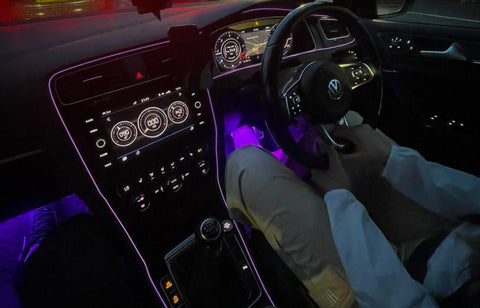
The Power of Colour Psychology
To fully grasp the psychological effects of car interior lighting colours, it's important for us to first understand the fundamental principles of colour psychology.
Colours can influence specific emotions and behaviours that stem from the biological and cultural associations.
Understanding Colour Psychology
Colour psychology is the study of how different colours can impact human emotions, perceptions and behaviours.
Colours can be categorized into primary (red, blue, yellow) and secondary (green, orange, purple) groups, each with distinct emotional associations.
It's also vital to recognize that cultural differences can massively influence our perceptions of colour. So two different cultures may see the same colour and give it totally different meanings.
The Role of Colour in Our Lives
Colours play a vital role in our daily lives, impacting our choices and emotions in ways we may not even consider.
Our style and clothing choices are heavily based on colour. In choosing what your outfit will be, we would consider the event/place we are going to and dress accordingly. Colours are strongly associated with particular events and we would find it rude or offensive to violate the norms of our culture. For example, at weddings, it is generally rude for anyone to wear all white other than the bride. Whereas guests would generally wear lighter, softer tones and it would be rare for you to see someone wearing all black.
Seasons are also exemplified by colours, with spring and summer giving us more bright tones in nature and autumn and winter giving us darker tones. Autumn tones consist of brown hues, which are heavily associated with trees and falling leaves. Darker orange tones also can be associated with this season as it is a time of the fading brightness brought about by the summer season. Summer has more of a brighter orange and yellow feel to it, as the sun is out, giving us that brightness and deepening the lighter hues that have come from spring. Winter tones consist of white, which is heavily connected to cold weather and snow, but generally darker tones as it's the days are duller and more subdued.
Advertising and marketing are heavily influenced by colour psychology, with popular brands using specific colours to drive emotions at a certain time to encourage a particular reaction. Brands intentionally use these colours in logos, on their website and throughout their branding, as these processes are statistically proven to improve conversion rates. Which means the research proves that using these colours in certain places works and that's why they do it.
So now, we can see more into the areas in which colours impact our daily lives, from the products we purchase to our clothing choices, colours shape our preferences and decisions.
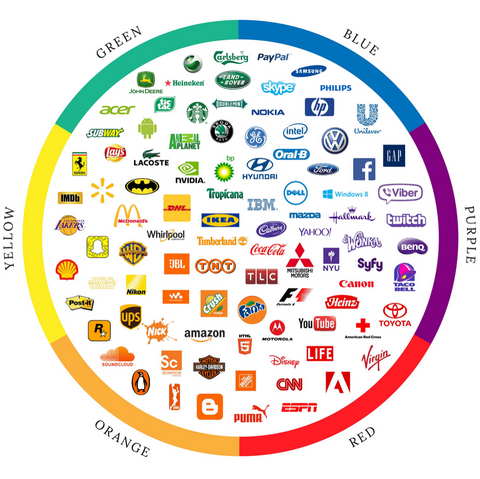
The Psychology of Car Interior Lighting
With a foundational understanding of colour psychology in place, we can now explore how different car interior lighting colours can shape our driving experience and emotional state.
Warm Colours
Warm colours encompass shades of red, orange, and yellow. These colours tend to elicit feelings of warmth, energy, and stimulation.
Red Interior Lighting
- The Colour of Energy: Red is often associated with energy, excitement, and passion. It can raise heart rates and stimulate the senses.
- In the Car: Red interior lighting can create a sense of alertness and urgency, making it an ideal choice for sports cars or for drivers who need to stay focused during their journey.
Orange Interior Lighting
- Warm and Welcoming: Orange is a warm, welcoming color that can evoke feelings of friendliness and enthusiasm. It radiates a sense of sociability.
- In the Car: Orange lighting can create a comfortable and inviting atmosphere, making it a great choice for longer drives or for those who wish to establish a welcoming ambiance inside their vehicle.
Yellow Interior Lighting
- Clarity and Focus: Yellow is often associated with clarity and mental focus. It can promote alertness without the intensity of red.
- In the Car: Yellow interior lighting can enhance concentration and reduce driver fatigue during extended trips, making it beneficial for both short commutes and long journeys.
Cool Colours
Cool colours include shades of blue, green, and purple. These colours are typically linked to feelings of calmness, relaxation, and tranquility.
Blue Interior Lighting
- Calming and Serene: Blue is known for its calming and serene qualities. It has the power to reduce anxiety and stress.
- In the Car: Blue interior lighting can provide a soothing and peaceful atmosphere, which is particularly effective for evening or nighttime driving when relaxation and reduced stress are essential.
Green Interior Lighting
- Balance and Harmony: Green symbolizes balance and harmony. It is often associated with nature and tranquility.
- In the Car: Green interior lighting can promote a sense of equilibrium and peace, making it suitable for various driving scenarios, from daily commutes to cross-country journeys.
Purple Interior Lighting
- Luxury and Creativity: Purple is often associated with luxury, creativity, and sophistication.
- In the Car: Purple interior lighting can add a touch of elegance and innovation to your driving experience. It's an excellent choice for those who wish to infuse a sense of luxury into their journeys.
Neutral Colours
Neutral colours such as white and grey can provide a sense of balance, versatility, and simplicity within your car's interior.
White Interior Lighting
- Clean and Modern: White is often associated with cleanliness and modernity. It has a timeless and minimalist appeal.
- In the Car: White lighting can create a clean and futuristic ambiance, enhancing the perception of a modern vehicle interior.
Grey Interior Lighting
- Understated Elegance: Grey is known for its understated elegance and sophistication. It gives off a sense of maturity and professionalism.
- In the Car: Grey interior lighting can add a touch of refinement to your car's interior design, making it an ideal choice for those who prefer a classic and sophisticated look.
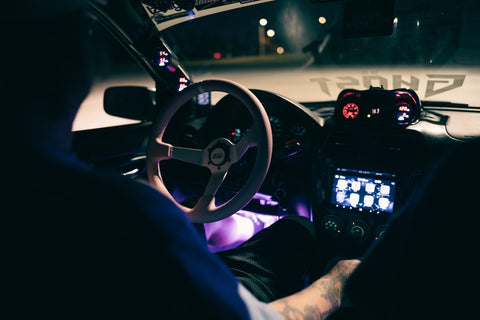
Practical Applications and Recommendations
With a deeper understanding of colour psychology and it's relevance to your car's interior lighting, we can now look at it's practical applications and recommendations for choosing the right colour for your vehicle.
Daytime vs. Nighttime Driving
Choosing the appropriate colour for your car's interior heavily depends on the time of day and the driving conditions.
During the day you may opt for colours that would enhance your alertness and focus. Red, orange or yellow which can help you maintain concentration on the road.
At night however, it would be ideal to prioritize lighting that minimizes glare and creates more of a soothing atmosphere. Colours like blue or green can reduce eye strain and promote calmness during evening commutes.
Personalization and Customization
Customizing your car's interior is a great way to create your own personalized enviroment and really express yourself.
In choosing your colour preferences you can consider your personality, so that your space is an extension of your own identity.
Use multi-colour sets to see what colours resonate with you most, allowing you to tailor your interior lighting to your mood and preference.
Safety Considerations
While aesthetics are essential, safety should always be a top priority when choosing car interior lighting colors. Here are some safety considerations:
- Minimizing Distraction: Avoid overly bright or intense colours that may distract you or other drivers on the road. Safety should never be compromised for aesthetics.
- Enhanced Visibility: You can use your interior lighting strategically to improve the visibility of important controls in your car, especially during nighttime driving. Illuminated controls can reduce the need to divert your attention from the road.
Future Trends in Car Interior Lighting
As technology continues to advance, we look forward to more innovation and customizable options.
In the time of increasing environmental awareness, advances in sustainable lighting are expected. Car manufacturers are exploring the use of sustainable and recycled materials in lighting design. This eco-friendly approach contributes to environmental conservation.
LED (Light Emitting Diode) technology are our go to choice of lighting for our customers as they make car interiors more energy-efficient and environmentally friendly. LEDs consume less power, reducing the vehicle's carbon footprint. These are being increasingly used in car manufacturing.
Here's a little glimpse into the future of automotive lighting design:
Smart Lighting Systems
Smart lighting systems are poised to revolutionize car interior lighting, by offering adaptive and dynamic features:
- Adaptive Lighting: Smart lighting systems can adjust interior colours in response to driving conditions, weather, and driver preferences. This adaptability optimizes the driving experience and enhances safety with automation.
- Biometric Feedback: Interior lighting may soon respond to the driver's biometric data, such as stress levels or fatigue. By analyzing these data points, the lighting system can adapt to promote comfort and alertness.

Conclusion
In conclusion, the psychological effects of different car interior lighting colours are quite a fascinating study. Considering we spend so much time in our cars, it makes sense for us to create the best space possible. One that will not only give us comfort but aid our driving performance in all areas.
Though often overlooked, the impact of colour on our emotions and well-being is undeniable. By understanding the principles of colour psychology and considering the influence of warm, cool, and neutral colours, you can make informed choices about the lighting colours you choose for your vehicle's interior.
Whether you seek heightened alertness during daytime drives, a sense of calm and relaxation for your evening commute, or a touch of luxury and sophistication for your journeys, your choice of lighting colour can significantly upgrade your driving experience.
As technology continues to advance, we anticipate even more advanced lighting options in our cars, tailored to our moods and needs. The future of car interior lighting holds exciting possibilities, where smart systems and sustainability will further enhance our driving experiences.
In the end, it's not merely about the colour of the interior lighting; it's about the emotions, comfort, and safety it brings to your journey on the open road.


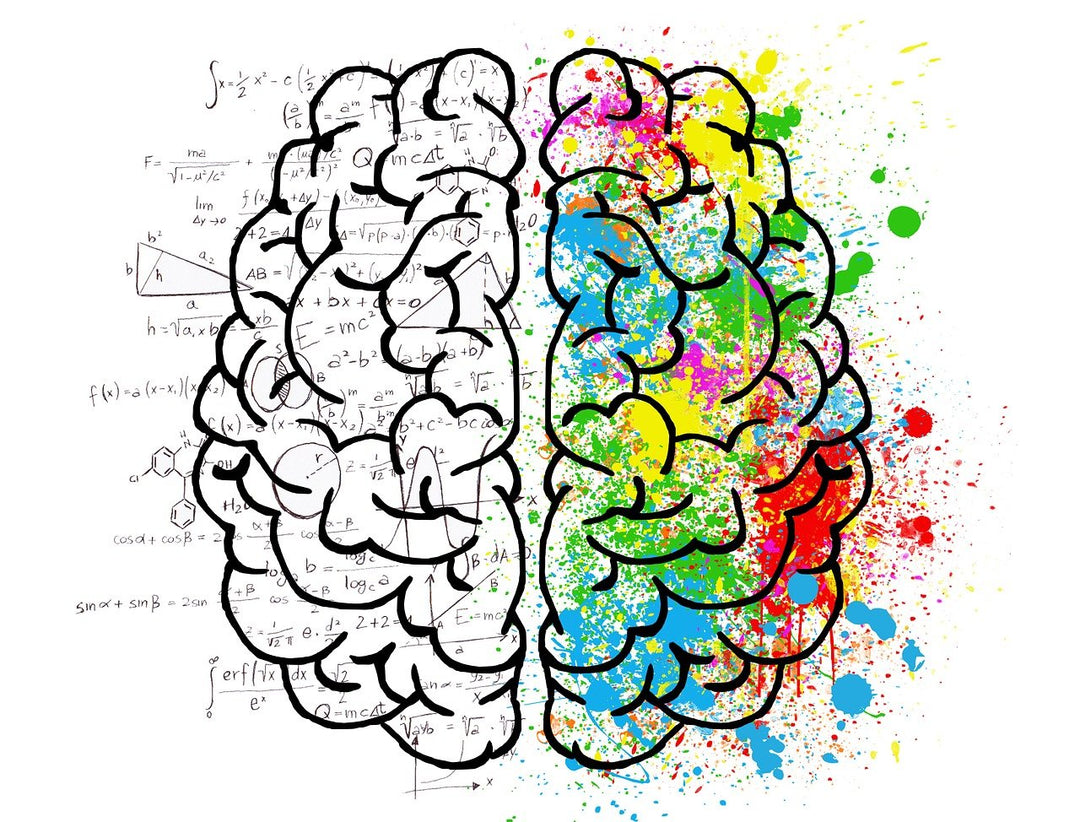
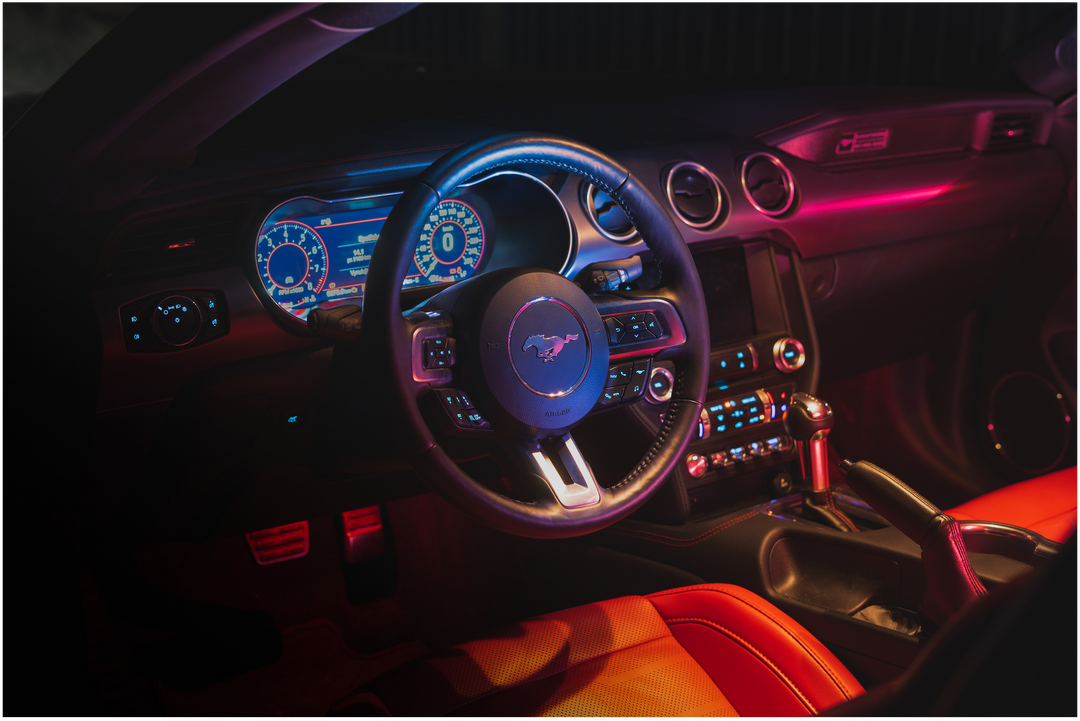
Leave a comment